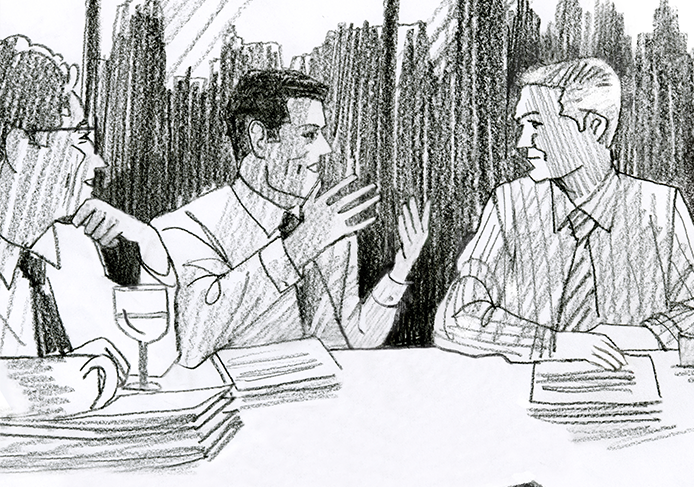In this second of three articles from our interview with Mark Swaine from interfacebuilders.io we continue the discussion about the adaptation of user experience in large corporate organisations. This time around, Mark talks about how he makes sure his clients are solving the right user experience problems and how he bridges the gap between client expectations and user needs.
When starting a new client engagement SOW you may discover that their current live product might be under-performing or lacking user context. But, more times than not you may be able to salvage some of the underlying thinking and user experience. Truth is, the clients’ current live product was built for a specific reason that solved particular business requirements and user needs at that time. Stakeholders may want it to perform and look more like their competitors platform today and be scalable to every device type and screen size, but this may not be the right place to start.

Begin every project by gathering information, review current product performance and test and compile as much user research as possible. Try to test core product flows, key user tasks and salvage any current user flows, framework and functionality where possible that can help speed up ideation and delivery. This will help you to shape and story-tell more clearly the most important UX issues that need to be addressed within the product first. Legacy learnings will always vary and will require a great deal of departmental stakeholder conversation, buy in and also present opportunities for the creation of new exciting product roadmaps, guidelines and governance models.
When you start any new client project you’ll notice many levels of client preparation. Sometimes, stakeholders may be ready with validated business requirements, a product manager, dev team and a good understanding of time and budget. But, every engagement is subject to change and scope can change direction very quickly during the early stages based on a client’s level of preparation, understanding and acceptance. Always be ready by validating approach with more questions…
Why am I here (as a UX professional, do you know why)?
Who is the product being made for?
Why is the product being made/remade?
How do the requirements fit within the wider business objectives of the organisation?
Who are your competitors?
How is success going to be measured?
How well do you know your users?
Is your new approach robust and adaptable to new technologies, devices and cultural trends?
There are of course many other questions that you will typically ask at this stage. For clients building new products, their answers will be based more on assumptions and current internal, user and market beliefs awaiting validation.

It’s important for UX professionals to ask as many questions as possible from the start. It is also important to educate and make sure everyone around the table understands and accepts the approach. Always be very clear and honest about your understandings of delivery expectations, timings, budget, implementation approach, internal client team skill sets and how the success rate will be defined and measured.
Defining and validating a correct statement of work can help team members focus on the correct UX problems first. This might be focusing on stodgy framework architecture, conversion rate drop offs or native navigation patterns on iOS and Android on different device types. Thinking about the longevity and scalability of the new implementation at this stage will help support future user features and technologies.
Educating clients at the start helps encourage UX-led thinking and internal team education. It will highlight the longevity of the said new implementation and will help bring a more collaborative approach to product internally.
####About Mark
 |
Mark Swaine is a user experience consultant at UXGuy.com - He is a recognized thought leader in user experience and user interface design. He has over 13+ years implementing industry best practice in mobile first design, usability testing, user research, UX technology trends and mobile product development trends. Find Mark on: Twitter and LinkedIn